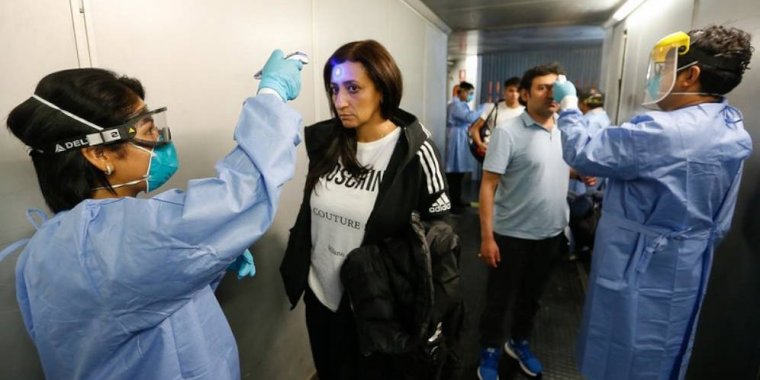| Health / Health News |
Eyeball fever scan ‘could prevent spread of COVID-19’
Researchers in Brazil have created a system capable of measuring body temperature from a distance and in crowded environments, such as hospitals, supermarkets and factories.

Eyeball fever scan ‘could prevent spread of COVID-19’. Photo: Minsa-Perú/Flickr
The system aims to detect people with fever — one of the most frequent symptoms of COVID-19 — and prevent the virus SARS-CoV-2 from spreading.
The technology, called Fevver, is based on algorithms and artificial intelligence connected to a camera. It captures images of faces and detects infrared energy radiation by measuring the temperature of the corners of the eyes, where the lacrimal channels are located.
The system is already being used in the Albert Einstein hospital, a private medical facility in São Paulo, which has the most recorded COVID-19 cases in Brazil. Set up at the hospital reception, it can capture and analyse the face of every person who enters the facility.
“The tear ducts are ideal places to assess body temperature by thermography as they are structures without epidermal coverage, with relatively stable humidity and vascularity close to the brain, where the body’s thermal control is performed,” says Paulo Gurgel Pinheiro, chief executive of Hoobox Robotics, which developed the new computational vision technology with Radsquare.
When the system detects fever it triggers a camera, which takes a photo of the person and sends a notification to nursing staff.
“It has shown to be an effective way to screen people arriving at the hospital and direct those who have fever and eventually COVID-19 infection to another space designed to receive them,” Pinheiro adds.
Computational vision in this case can extract more information than just a person's body temperature.
“The system can use the image to estimate the age, the gender, and even determine if the person is registered in the hospital database, generating data of high value to doctors and researchers to better understand the pandemic dynamics,” says Marcus Lima, co-founder of Acta Visio, a company created in 2017 to develop solutions based on computer vision.
Lima and his team are working on the prototype of an image-processing system called Asepguard, which monitors hand hygiene among healthcare professionals. It aims is to reduce every kind of infection, including COVID-19, and provide quantitative data that can help hospital managers evaluate sanitation procedures.
The first tests involving Asepguard were conducted last year at the Cajuru University Hospital in Curitiba, Paraná, in partnership with hospital management company 2iM. Researchers are now considering how to move forward with technology. (SciDev.Net)
YOU MAY ALSO LIKE





